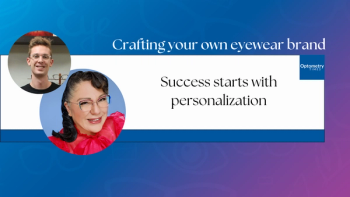
AAOpt 2024: Fitting corneal gas permeable lenses with Dr Susan Gromacki
Gromacki, OD, FAAO, FSLS, emphasizes that corneal GP lenses remain an important part of a contact lens specialist's armamentarium
Susan Gromacki, OD, FAAO, FSLS, discusses the "lost art" of fitting corneal gas permeable (GP) lenses, presented at the Academy of Optometry (AAOpt) conference. Gromacki explains that as optometry curricula focus more on new technologies and ocular diseases, traditional contact lens fitting techniques like corneal GP lenses are receiving less attention. However, Gromacki emphasizes that corneal GP lenses remain an important part of a contact lens specialist's armamentarium. She notes that while many optometrists are now highly proficient in fitting scleral lenses, they may have forgotten the skills needed for traditional GP lens fitting.
Gromacki stresses the importance of being skilled in all types of specialty contact lenses to best serve patients. One key tip Dr. Gromacki shares is the use of an anesthetic drop prior to the diagnostic corneal GP lens fitting. This helps improve patient comfort and reduce tearing, which can interfere with accurately assessing the lens fit. She contrasts this with scleral lens fittings, where she prefers to assess the patient's natural response to the lens. Gromacki discusses reasons why corneal GP lenses have fallen out of favor, including the significant improvements in soft lens materials and designs, particularly for patients with astigmatism. However, she notes that GP lenses still have an important role, especially for patients with high astigmatism or those who prefer the visual acuity provided by GP lenses.
The summary concludes with Gromacki's key takeaways from the session, highlighting her enjoyment of the interactive, conversational format of the AAOpt's Advanced Continuing Education program, where instructors and attendees can learn from each other.
Newsletter
Want more insights like this? Subscribe to Optometry Times and get clinical pearls and practice tips delivered straight to your inbox.
















































.png)


